UPSC Daily Current Affairs: 24 August 2024 | Current Affairs & Hindu Analysis: Daily, Weekly & Monthly PDF Download
GS3/Science and Technology
ISRO’s Chandrayaan-4 Mission
Source: Economic Times
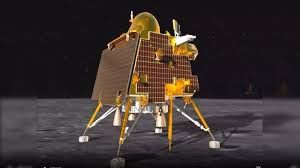
Why in News?
The designs of India’s next mission to the Moon, Chandrayaan-4, have been completed, and it is anticipated to take place in 2027, as stated by ISRO chairman S Somanath during the National Space Day celebrations.
Chandrayaan-4 Mission:
- Building on the accomplishments of Chandrayaan-3, ISRO is now concentrating on Chandrayaan-4, a mission aimed at bringing back samples from the moon.
- This challenging project aims to achieve a gentle landing on the Moon, collect rock samples from the moon's surface, and safely transport them back to Earth.
- If successful, this mission would position India among the select group of countries, including the United States, Russia, and China, that have achieved this significant feat.
Key Objectives of the Mission:
- Ensuring a safe and gentle landing on the Moon's surface.
- Collecting and preserving lunar samples.
- Lifting off from the Moon's surface.
- Executing docking and undocking maneuvers in lunar orbit.
- Facilitating sample transfer between different spacecraft modules.
- Returning the collected samples securely to Earth.
Mission Strategy and Components:
The strategy for Chandrayaan-4 is intricate, involving five distinct spacecraft components:
- Propulsion System: Responsible for transporting both the lander and ascender stages to the Moon.
- Descender: Designed for landing on the lunar surface, equipped with tools for soil sampling.
- Ascender: Detaches from the lander post-sample collection and ascends from the lunar surface.
- Transfer Module: Receives samples from the Ascender and moves them to the Re-entry module.
- Re-entry Module: Safely returns lunar samples to Earth, engineered to endure the re-entry phase into Earth's atmosphere.
Detailed Payloads:
- Lunar Propulsion Module: Transports the Lunar Lander and Ascender stages to the Moon, similar to the propulsion module utilized in Chandrayaan-3.
- Lunar Module Descender: Touches down on the Moon and carries instruments for supporting the Ascender stage along with soil sampling tools.
- Lunar Module Ascender: After gathering samples, it separates from the Lander, ascends to lunar orbit, and prepares for docking.
- Transfer Module: Transfers samples from the Ascender to the Re-entry Module, enabling their return trip to Earth.
- Re-entry Module: Specifically designed to safely return to Earth with the lunar samples.
Dual Rocket Launch Strategy:
Chandrayaan-4 will employ two different launch vehicles:
- Launch Vehicle Mark-3 (LMV-3): A heavy-lift rocket that will carry the propulsion, descender, and ascender modules.
- Polar Satellite Launch Vehicle (PSLV): The workhorse rocket that will transport the transfer and re-entry modules to their designated lunar orbits. These launches will occur on separate dates, with the earliest launch projected not to happen before 2028.
Advanced Technology and Space Docking Experiment (SPADEX):
- The success of the mission relies on the effective docking of the Ascender Module with the Transfer Module in lunar orbit. This process depends on completing the Space Docking Experiment (SPADEX).
- SPADEX, developed by ISRO, involves two spacecraft and aims to improve technologies for orbital rendezvous, docking, and formation flying. These are crucial for the Chandrayaan-4 mission.
- ISRO plans to enhance India's lunar exploration capabilities and bring back samples from the Moon by using advanced technologies and new strategies. This achievement will be a significant milestone in India's space exploration journey.
ISRO’s Chandrayaan-4 Mission:
- ISRO has completed the blueprint for Chandrayaan-4, India's next mission to the Moon. The goal is to bring back rocks and soil from the Moon to Earth. The mission is likely to happen in 2027.
- This new mission is more intricate than the previous one. It includes five different parts and needs two space docking operations, which ISRO has not done before.
- During Chandrayaan-3, two important aspects needed for this mission were tested successfully. The final government approval is still awaited.
- ISRO has also finished planning for Chandrayaan-5, but what it aims to do and when it will happen are not disclosed yet.
GS2/Polity
Comptroller and Auditor General of India (CAG)
Source: Indian Express
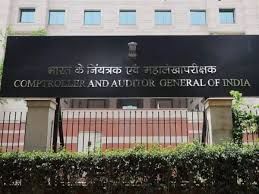
Why in News?
Reports from the Comptroller and Auditor General (CAG) undergo scrutiny by Parliament, and the Government has the opportunity to present its viewpoints on these reports, as stated by the Supreme Court recently.
About Comptroller and Auditor General of India (CAG):
- CAG is an independent authority established under Article 148 of the Indian Constitution.
- CAG serves as the apex body responsible for auditing and inspecting all expenditures and receipts of both the Central and State Governments, including organizations significantly funded by the government.
Constitutional Provisions:
- Article 148 outlines the appointment, oath, and conditions of service for the CAG.
- Article 149 defines the duties and powers of the CAG.
- Article 150 mandates the form in which the accounts of the Union and States should be maintained, as prescribed by the President on the advice of the CAG.
- Article 151 states that the CAG's reports regarding the accounts of the Union must be submitted to the President, who will then present them to each house of Parliament.
- Article 279 states that the CAG certifies the Calculation of "net proceeds," and this certification is final.
Appointment and Terms of Service:
- According to Article 148, the CAG is appointed by the President and can only be removed in the same manner and under the same grounds as a Supreme Court Judge.
- The CAG serves a term of six years or until the age of 65, whichever occurs first.
- Post-retirement or resignation, the CAG is ineligible for any job or office under the Central or State Governments.
Functions of CAG:
- The CAG conducts audits on all expenditures from the Consolidated Fund of India and the Consolidated Funds of each state and Union Territories with a legislative assembly.
- It audits expenditures from the Contingency Fund of India and the Public Account of India, along with respective funds of each state.
- The CAG reviews all trading, manufacturing, profit and loss accounts, and balance sheets maintained by any Central or State Government department.
- It audits the receipts and expenditures of all bodies and authorities that receive substantial financing from Central or State revenues, including government companies and other corporations when mandated by law.
- Additionally, the CAG can audit any other authority if requested by the Governor.
- The CAG advises the President regarding the format in which the accounts of the Centre and States should be maintained.
Reports by CAG:
- The CAG submits audit reports to the President, who then presents them to both houses of Parliament.
- Three main audit reports are submitted: on appropriation accounts, finance accounts, and public undertakings.
- For State accounts, the CAG reports to the Governor, who presents them to the state legislature.
- Public Accounts Committees in both Parliament and State legislatures review these audits.
- The CAG oversees the Indian Audit and Accounts Service (IA&AS) to ensure that government spending aligns with parliamentary approvals and maintains financial accountability.
- The CAG operates as an agent of Parliament, conducting audits of expenditures on its behalf, thereby being accountable solely to Parliament.
Limitations:
- The CAG's role in auditing public corporations is somewhat restricted, as some corporations are audited directly by the CAG, like ONGC and Air India.
- Many corporations are audited by private professional auditors, with the Central Government consulting the CAG for any necessary supplementary audits.
- Government companies can also be audited by private auditors appointed by the Central Government with the CAG's advice.
GS3/Science and Technology
Space sector contributed ₹20,000 crore to India’s GDP over the last decade
Source: The Hindu
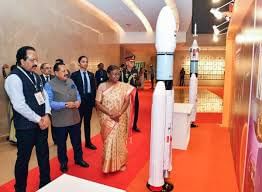
Why in News?
As highlighted in a recent report by the Indian Space Research Organisation (ISRO), India's space sector has made a substantial contribution of approximately $24 billion (₹20,000 crore) to the nation's Gross Domestic Product (GDP) over the past ten years.
Key highlights of the report
- India has developed advanced capabilities in satellite and launch vehicle technology.
- Communications satellites like the INSAT and GSAT series provide essential services such as telecommunications and disaster management.
- Remote sensing satellites, particularly the IRS series, facilitate resource management and environmental conservation.
Satellite Technology
- Communication Satellites: The INSAT and GSAT series play a vital role in telecommunications and weather forecasting.
- Remote Sensing: The IRS satellites assist in managing resources and monitoring agriculture.
Launch Vehicle Technology
- Polar Satellite Launch Vehicle (PSLV): This vehicle is renowned for its reliability and versatility in launching satellites into various orbits.
- Geosynchronous Satellite Launch Vehicle (GSLV): Particularly the GSLV Mk III variant, is crucial for launching heavier satellites and supports India's human spaceflight initiatives.
Space Exploration
- Chandrayaan Missions: India's moon missions, including Chandrayaan-1, Chandrayaan-2, and Chandrayaan-3, have greatly advanced lunar science.
- Mars Orbiter Mission (Mangalyaan): This mission, which launched in 2013, made India the first nation to reach Mars on its first attempt, showcasing advanced technology at a significantly lower cost compared to similar missions by other nations.
Navigation Systems
- NAVIC: The Navigation with Indian Constellation (NAVIC) system provides precise positioning services across India and its surrounding regions.
Role of Private Players
- NewSpace India Limited (NSIL): This commercial arm of ISRO, established in 2019, focuses on technology transfer, manufacturing launch vehicles, and offering satellite launch services.
- Indian National Space Promotion and Authorization Center (IN-SPACe): This regulatory body encourages and authorizes private sector involvement in space activities, ensuring equitable access to space resources.
Private Companies
- Companies like Skyroot Aerospace, Agnikul Cosmos, and Pixxel are playing significant roles in satellite manufacturing and launch services.
About the report
- The report was commissioned by ISRO to assess the socio-economic impact of the space sector from 2014 to 2023.
- Conducted by econONE and Novaspace, the findings were unveiled during the National Space Day celebrations in New Delhi on August 23, 2024.
Key findings
- India's space sector has contributed about $24 billion to the GDP over the last decade.
- It has directly supported 96,000 jobs in both public and private sectors.
- For every dollar generated by the space sector, there is a multiplier effect of $2.54 on the Indian economy.
- India's space sector is 2.5 times more productive than the broader industrial workforce.
- With $13 billion invested over the last decade, India ranks as the 8th largest space economy globally.
- Satellite communications represent 54% of the space economy, followed by navigation (26%) and launches (11%).
- The sector is diversifying, with 700 companies, including 200 startups, contributing to a revenue of $6.3 billion in 2023.
Way ahead
- India's space sector has elevated the country's global standing but has had limited impact on the profitability and competitiveness of domestic companies.
- This limited impact is largely due to the space program being influenced by political factors rather than commercial priorities.
- Regulatory reforms have been introduced but are yet to be fully implemented, and a lack of venture capital is challenging startups in space technology.
GS3/Defence & Security
BHISHM Cubes
Source: NDTV
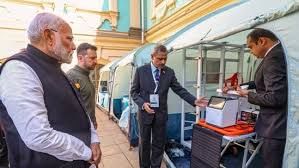
Why in News?
During his recent visit to Kyiv, the Prime Minister of India presented four BHISHM cubes to the President of Ukraine.
What is BHISHM?
- BHISHM (Bharat Health Initiative for Sahyog, Hita, and Maitri) is a program that provides compact, mobile medical units specifically designed for emergency care. These units are intended to deliver medical services promptly and effectively.
- Key features of BHISHM cubes:
- Compact and organized: Medical supplies and equipment are stored in 15-inch cubic boxes. These boxes are systematically arranged according to types of injuries and medical requirements, promoting efficiency in emergency situations.
- Transport flexibility: The cubes are designed to be mounted on an adjustable framework, enabling transportation through various means such as air, sea, land, and even drones. Each cube weighs around 20 kg, making them manageable for individual carriers.
- Mother and BHISHM cubes: A total of 36 mini cubes can be combined to create one mother cube. Furthermore, two mother cubes can be integrated to form one full BHISHM cube.
- Functionality of mother cubes: One mother cube can provide initial care, shelter, and food for up to five individuals for a duration of 48 hours. The second mother cube is equipped to deliver surgical care, capable of performing between 10 to 15 basic surgeries each day.
- Ease of use and management: Medicines and equipment within the cubes are categorized using Radio Frequency Identification (RFID) for inventory management, ensuring real-time updates on stock levels. Additionally, a dedicated application and tablet supporting 180 languages are included for operational guidance.
- Capacity and Features: Each BHISHM cube can manage approximately 200 emergency cases, addressing issues such as trauma, burns, fractures, and shock. They are also equipped to support basic surgical procedures and can generate power and oxygen for limited periods.
- Technological Integration: BHISHM cubes utilize Artificial Intelligence (AI) and data analytics to enhance coordination, enable real-time monitoring, and ensure efficient management of medical services.
- Project Aarogya Maitri
- Objective: This initiative is part of India's commitment to providing essential medical supplies to developing nations impacted by disasters or humanitarian crises.
- Importance: The project underscores India's dedication to international humanitarian aid.
GS3/Environment
Key Facts about Marshyangdi River
Source: The Hindu
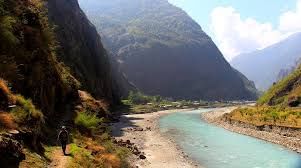
Why in News?
At least 14 individuals lost their lives, and 16 others were injured when an Indian tourist bus fell 150 meters into the swiftly flowing Marsyangdi River in central Nepal recently.
Overview of the Marshyangdi River:
- The Marshyangdi River is a mountain river that stretches approximately 150 kilometers.
- It serves as one of the significant tributaries of the Gandaki River, which eventually merges with the Ganga River in India.
Origin:
- The river originates from the northern slopes of the Annapurna massif, recognized as one of the highest mountain ranges globally.
- Key sources include glaciers from the Annapurna Himalayan range, the Manaslu Himalayan range, and the Larkya Himalayan sub-range.
Geography and Features:
- Flowing through the rugged terrain of the Himalayas, the Marsyangdi River is noted for its rapid and powerful currents.
- It traverses deep gorges and cascades down waterfalls, offering breathtaking views of the surrounding peaks, such as Annapurna II, Annapurna III, and Gangapurna.
Ecological Significance:
- The river and its tributaries, including Nyagdi and Dorti, are well-known for the fresh taste of snow trout, attracting fishing enthusiasts.
Adventure Activities:
- The Marsyangdi River is particularly famous among adventure seekers for activities like white-water rafting and kayaking.
Hydropower Projects:
- Numerous hydropower projects have been developed along the river's course, highlighting its potential for energy generation.
GS2/Governance
Reviving the PM-WANI Scheme
Source: Financial Express
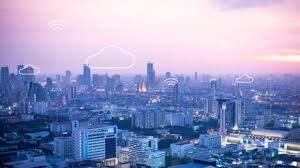
Why in News?
The Telecom Regulatory Authority of India (TRAI) has released a draft Telecommunication Tariff (70th Amendment) Order 2024 on "Regulatory framework for PM-WANI scheme."
The PM-WANI ecosystem comprises four main components:
- Public Data Office (PDO): Local shops and retailers set up Wi-Fi hotspots and offer internet access.
- Public Data Office Aggregator (PDOA): Provides authorization and accounting services to PDOs.
- App Provider: Displays nearby available hotspots on users' devices.
- Central Registry: Managed by the Centre for Development of Telematics, it maintains details of App Providers, PDOs, and PDOAs.
The advantages of PM-WANI include:
- Improved internet access, especially in rural areas, which helps close the digital divide.
- Support for the Digital India initiative, potentially contributing to GDP growth.
Status of Public Wi-Fi Hotspots under PM-WANI:
- The National Digital Communications Policy 2018 aimed to deploy 10 million public Wi-Fi hotspots by 2022 as part of the 'Connect India' mission.
- Furthermore, the Bharat 6G Vision aims for 10 million hotspots by 2022 and 50 million by 2030 to support Digital India 2030 mobile and broadband goals.
- Despite these ambitious goals, the actual number of PM-WANI hotspots is significantly lower. As of July 2024, there were only 207,642 deployed PM-WANI Wi-Fi hotspots, with 199 PDOs and 111 app providers.
- The average daily data usage per Wi-Fi hotspot decreased from approximately 1 GB to just a few MBs, a figure much lower than the monthly data limits typically offered to retail broadband users.
Reasons for the Poor Penetration of Public Wi-Fi Hotspots:
The limited growth of public Wi-Fi hotspots can be attributed to several factors:
- The high costs of backhaul internet connectivity imposed by Telecom Service Providers (TSPs) and Internet Service Providers (ISPs) on Public Data Offices (PDOs).
- Backhaul refers to the segment of a network that connects core networks to local networks.
- TSPs and ISPs often require PDOs to connect public Wi-Fi Access Points using costly Internet Leased Lines (ILL), instead of more affordable Fibre-to-the-Home (FTTH) broadband options.
- For context, the cost of 100 Mbps ILL is 40 to 80 times more expensive than FTTH broadband connections, making it financially unfeasible for many small shop owners to establish public Wi-Fi hotspots.
Changes Proposed by the Draft Telecommunication Tariff (70th Amendment) Order 2024:
The telecom regulator has suggested a revised cost structure under the PM-WANI scheme:
- The proposed tariff for PDOs will align with rates applicable to retail broadband (FTTH) connections.
- This adjustment aims to lower the cost of broadband connectivity for PDOs, potentially accelerating the growth of public Wi-Fi hotspots.
GS1/Indian Society
How to ensure dignity for the terminally ill?
Source: Indian Express

Why in News?
The Supreme Court of India has denied permission to the parents of Harish Rana, a 32-year-old man who has been in a vegetative state for 11 years, to remove his Ryles tube, a device used for feeding. A Ryles tube, also known as a nasogastric (NG) tube, is inserted through the nose, passing through the nasal cavity, esophagus, and into the stomach for nutritional support.
Recent Supreme Court Judgment:
- The Bench, led by CJI D.Y. Chandrachud, ruled that the Ryles tube is not classified as a life support system, thus it cannot be withdrawn.
- This ruling has ignited debates concerning legal and ethical implications, especially since the Supreme Court's 2018 judgment allows for life support withdrawal in terminal situations under "passive euthanasia."
- Passive euthanasia refers to the withdrawal of medical treatment aimed at hastening the death of a terminally ill patient.
- The 2018 ruling legalized this practice, allowing patients to create a "living will" to refuse life-sustaining treatment when they are unable to express their wishes.
Ethical Challenges:
- Concerns arise regarding whether the ruling benefits the patient, as keeping someone in a vegetative state may prolong suffering.
- The principle of "do no harm" faces challenges; maintaining a patient in such a condition with artificial feeding may lead to extended suffering for both the patient and their caregivers.
- The right to a dignified life and death may be undermined, as addressed in cases like Common Cause v. Union of India (2018), which recognized the right to die with dignity as part of the right to life under Article 21.
- Patient autonomy, which is crucial for dignity, seems overlooked; the judgment did not account for the patient's or family's wishes in the decision-making process.
Need for Legal Clarity:
- It is crucial to legally differentiate between euthanasia and the withdrawal of futile life-sustaining treatments.
- Decisions in such sensitive cases should include input from palliative care physicians and ethical experts to ensure comprehensive consideration of medical and ethical factors.
- Promoting Advance Medical Directives and Advance Care Planning is essential to empower individuals to control their end-of-life decisions, ensuring their rights to quality of life and death are honored.
- The judgment underscores the necessity for systemic reforms to prevent families from engaging in legal disputes and to protect patient rights through appropriate legal frameworks.
Conclusion:
The recent Supreme Court ruling emphasizes the urgent requirement for legal clarity, ethical considerations, and systemic reforms to safeguard patient rights and ensure dignity in end-of-life situations.
Mains question for practice:
Discuss the need for legal clarity and systemic reforms to uphold the dignity and rights of patients in end-of-life decisions. (150 words) 10M
GS3/Economy
The road to 2047 for Indian agriculture
Source: The Hindu

Why in News?
As India approaches its 100th independence anniversary in 2047, there is a significant focus on the aspiration to become a 'developed nation'. This ambition emphasizes the importance of agriculture in achieving comprehensive growth.
Goals of Indian Agriculture by Vision 2047:
- Comprehensive Goal: To achieve a six-fold increase in per capita Gross National Income (GNI), emphasizing the need for comprehensive agricultural development.
- Trade Goal: Agricultural and processed food exports are expected to exceed USD 50 billion by 2022-23, with a focus on enhancing the processing of fruits and vegetables and increasing value-added products in exports.
- Sustainable Goal: The transformation of Indian agriculture will rely on sustainable practices including precision farming, genetically modified crops, and advanced irrigation techniques like drip and sprinkler systems.
Present Stark Imbalance in the Indian Economy:
- Workforce vs. GDP Contribution: Agriculture employs nearly 46% of the workforce but contributes only about 18% to the GDP, highlighting a significant imbalance.
- Growth Disparity: Since 1991-92, the overall GDP has grown at 6.1% annually, while agricultural GDP has lagged at 3.3%. In the last decade (2013-2023), overall GDP growth was 5.9% with agriculture at 3.6%, which is insufficient given the sector's socio-economic importance.
- Future Projections: By 2047, agriculture's share in GDP may shrink to 7%-8%, yet it could still employ over 30% of the workforce, necessitating substantial structural changes to prevent worsening disparities.
Government Initiatives:
- For Water Management: The Pradhan Mantri Krishi Sinchayee Yojana (PMKSY) promotes efficient water use through micro-irrigation, covering 78 lakh hectares with a budget of ₹93,068 crore for 2021-26.
- For Risk Management: The Pradhan Mantri Fasal Bima Yojana (PMFBY) provides financial assistance for crop losses, with 49.5 crore farmers enrolled and claims exceeding ₹1.45 lakh crore.
- For Market Access: The Electronic National Agriculture Market (eNAM) connects existing markets through an electronic platform, benefiting 1.76 million farmers and recording trade worth ₹2.88 lakh crore by September 2023.
- For Better Farmer Support: The Pradhan Mantri Kisan Samman Nidhi (PM-KISAN) scheme gives ₹6,000 annually to farmers, helping over 11.8 crore farmers.
- For Enhanced Soil Health: The Soil Health Card (SHC) scheme aims to optimize nutrient use, improving productivity with over 23 crore SHCs distributed.
Need for Strategic Planning:
- Population Growth: India's population is expected to reach 1.5 billion by 2030 and 1.59 billion by 2040, increasing food demand by about 2.85% annually.
- Future Demand: By 2047-48, food grain demand is projected to be between 402 million tonnes and 437 million tonnes, requiring sustainable production to exceed demand by 10%-13% under the Business-As-Usual scenario.
Way Forward:
- Investment in R&D: To sustainably meet future demands, significant investments in agricultural research, infrastructure, and policy support are crucial.
- Budget Allocation: The Budget for 2024-25 includes ₹20 lakh crore for targeted agricultural credit and the launch of the Agriculture Accelerator Fund, demonstrating a proactive approach to agricultural innovation and growth.
- Enhance Digital Infrastructure: Expanding digital platforms like eNAM will improve market access, provide real-time data, and help farmers achieve better price realizations.
Mains PYQ:
Discuss the vulnerability of Indian agriculture to the vagaries of nature, the need for crop insurance, and highlight the key features of the Pradhan Mantri Fasal Bima Yojana (PMFBY). (2016)
GS3/Environment
Amrabad Tiger Reserve (ATR)
Source: Indian Express
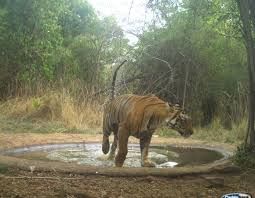
Why in News?
The state government has recently granted approval for the relocation of four villages situated in the core area of the Amrabad Tiger Reserve to a location outside the reserve.
About Amrabad Tiger Reserve (ATR):
- Location: ATR is located in the Nagarkurnool and Nalgonda districts of southern Telangana. It encompasses a portion of the Nallamala Forest, which is part of the Eastern Ghats mountain range.
- Size: Covering an area of 2611.4 square kilometers, ATR is one of India's largest tiger reserves and is the second-largest in terms of core area.
- History: Previously part of the Nagarjunasagar-Srisailam Tiger Reserve, ATR was renamed following the bifurcation of the state, with the northern section now under Telangana and the southern section remaining part of NSTR in Andhra Pradesh.
- Water Sources: The reserve is home to major reservoirs like the Srisailam Dam and Nagarjuna Sagar Dam, which are nourished by the Krishna River and its numerous perennial streams originating within ATR.
- Tribal Communities: The Chenchu tribe is one of the significant tribal communities residing in the Amrabad Tiger Reserve.
- Flora:
- Dense grass covers about 30% of the area and is also scattered across an additional 20%.
- Common tree species include Terminalia tomentosa, Hardwickia binata, Madhuca latifolia, Diospyros melanoxylon, and Gardenia latifolia.
- Fauna:
- The reserve is home to various wildlife, including tigers, leopards, wild dogs, Indian wolves, Indian foxes, rusty-spotted cats, sloth bears, honeybadgers, and wild boars.
- Over 303 bird species have been documented in this region, with notable groups such as eagles, pigeons, doves, cuckoos, woodpeckers, and drongos.
GS3/Economy
Time to reset the GST system
Source: Indian Express

Why in News?
Most states are currently opposed to modifying the existing five main GST rate slabs: 0%, 5%, 12%, 18%, and 28%.
About Goods and Service Tax (GST):
- The Goods and Services Tax (GST) was introduced in India through the Constitutional (One Hundred and First Amendment) Act of 2017.
- It is a comprehensive tax system that replaced various indirect taxes imposed by both Central and State Governments.
- GST allows both Central Government (CGST) and State Government (SGST) to levy and collect taxes on goods and services.
- For inter-state transactions, the Integrated GST (IGST) is applicable.
Essential Features of GST
- Multiple Tax Levels:
- India's GST framework has four primary tax rates: 5%, 12%, 18%, and 28%.
- There is also a “zero rate” for specific essential goods and services, such as exports.
- One Nation, One Tax:
- GST is based on the principles of value-added tax and applies uniformly to the supply of goods and services across India.
- This system eliminates the cascading effect of taxes.
- Destination-Based Tax:
- Revenue generated from GST is collected by the state where goods or services are consumed, not where they are produced.
- Eliminating Cascading Effect:
- Businesses can claim input tax credit for GST paid on purchases, ensuring taxes are only levied on the value added at each supply chain stage.
- Sector-specific Exemptions:
- Certain sectors, like healthcare and education, are either exempt from GST or have reduced tax rates for affordability.
- Threshold Exemption:
- Small businesses with a turnover below specified thresholds (20 lakhs for services and 40 lakhs for goods in intra-state supplies) are exempt from GST.
Present Challenges in GST Rates
- Complexity and Confusion:
- The existence of multiple GST slabs creates confusion for both businesses and consumers.
- Different rates for similar items complicate compliance and classification, leading to disputes.
- For example, GST on cement is 28%, while essential items like milk are exempt, yet derived products like skimmed milk powder are taxed at 5%.
- Anomalies in Taxation:
- Inconsistencies in GST rates exist, such as 18% taxation on medical and life insurance premiums, which many see as burdensome.
Need to simplify the current GST Slabs
- Rationalization Proposal:
- There is a growing agreement among industry experts and some officials that the GST structure should be streamlined to a maximum of three slabs.
- This simplification would ease compliance and reduce the administrative burden on both businesses and the government.
- Economic Stimulus:
- Simplifying GST rates could stimulate economic activity by lowering indirect taxes, encouraging consumption, and potentially increasing tax revenues.
Why are states resisting?
- Fear of Revenue Loss: Many states are concerned that changing the GST structure could decrease their revenue streams.
- Political Considerations: The political environment also influences resistance to change, with upcoming elections making states prioritize short-term revenue stability over long-term reforms.
Way forward:
- Phased Implementation: Introduce pilot programs in selected states or sectors to test the impact of GST simplification, addressing specific concerns before a nationwide rollout.
- Revenue Protection Schemes: Develop mechanisms to compensate states for any potential revenue losses during the transition, possibly through a formula-based compensation fund or temporary revenue guarantee.
Mains PYQ:
Explain the rationale behind the Goods and Services Tax (Compensation to States) Act of 2017. How has COVID-19 impacted the GST compensation fund and created new federal tensions? (2020)
|
44 videos|5283 docs|1115 tests
|
FAQs on UPSC Daily Current Affairs: 24 August 2024 - Current Affairs & Hindu Analysis: Daily, Weekly & Monthly
| 1. What is the significance of ISRO's Chandrayaan-4 Mission? |  |
| 2. How much has the space sector contributed to India's GDP over the last decade according to the Comptroller and Auditor General of India (CAG)? |  |
| 3. What are the key highlights of the report on the space sector by the Comptroller and Auditor General of India (CAG)? |  |
| 4. What are some of the key technologies and areas that the Indian space sector has been focusing on according to the article? |  |
| 5. How has the space sector in India evolved over the years, and what role do private players play in this sector? |  |





















